It all sounds a bit mad. A farming method which relies on things like raw brown cane sugar and rice instead of fertiliser? At the very least, if this method works, it’s probably better suited to small vegetable gardens. This is just a bit of what’s running through my mind as I drive to Co Limerick to meet with Kevin Wallace, the owner and grower at New Leaf Urban Farmers, and and Thomas Stack, an organic dairy farmer, farming 130ac with a herd of 55 exclusively grass-fed Fresians – both of whom practise Korean natural farming.
A different approach
I’m having a hard time wrapping my head around the practicalities of this biological farming method. It was developed in South Korea in the 1960s by a man named Cho Han Kyu. Its aim is to maximise farm productivity while minimising chemical inputs and as much physical effort as possible.
A quick Google search of Korean natural farming provides an overwhelming amount of acronyms – IMO, LAB, FPJ (see page 5 for more). Acronyms aside, what the method really does is increase the health of your soil by using what is naturally available in your area; mostly through fermentation and promotion of wild microorganisms. As a result, fertiliser becomes unnecessary and the method can work for any type of farm; supposedly anywhere in the world, though one concern is that it may not be able to feed high output production.
Natural inputs
For Tom and Kevin, inputs include sea water, fermented plant juices, calcium phosphates and fish amino acids. Tom uses a large supply of Highbank Orchards apple cider vinegar at his farm, while Kevin uses brown rice vinegar. Rice is used to help capture the microorganisms and the ferments are made using alcohol or brown sugar. As yet, more local alternatives to these crucial ingredients have not been found.
Indigenous microorganisms (IMO)
The two men have been working together to create the most crucial aspect of the farming method – their IMO mixture, which is then used on their fields and vegetable beds to increase the microbiome of the soil.
An IMO is completed in five different stages. Like making a sourdough starter, you provide the captured microorganisms with moisture, food and warmth to enable it to multiply. Once created, the IMO mixture can be used as is, or can be made into liquid IMO – a sort of “tea” by being diffused with various other natural inputs, which is then sprayed or fed into a field or garden.
New Leaf Urban Farmers
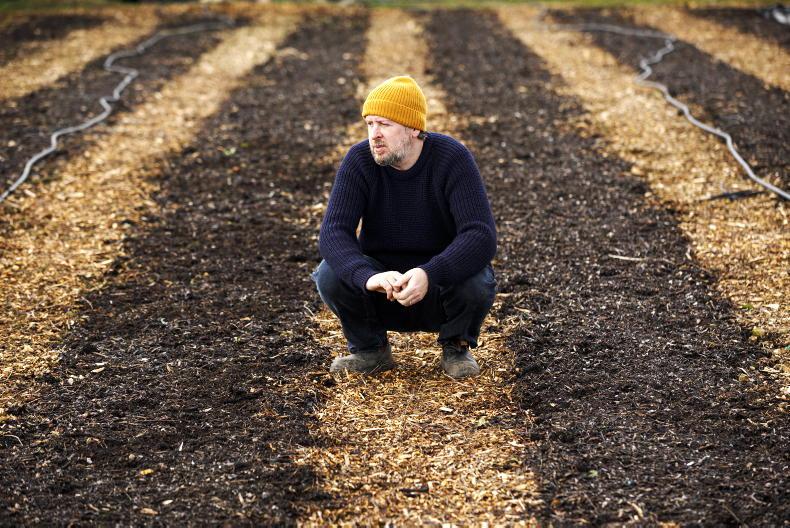
Kevin uses only hand tools for growing his vegetables. \ Donal O'Leary
“Korean natural farming is all about balance and harmony – but don’t think for a second it’s ‘hippy-dippy’,” Kevin says as we walk the length of his 1.5ac allotment in Bawnmore. “This method is highly scientific – in fact, it’s the most scientific bio-farming method I’ve come across. I’ve spent about 400 hours online learning about the method; [the information is] out there and available to anyone.”
Kevin has been growing vegetables full time – mainly selling directly to chefs and other food service operations – since 2016.
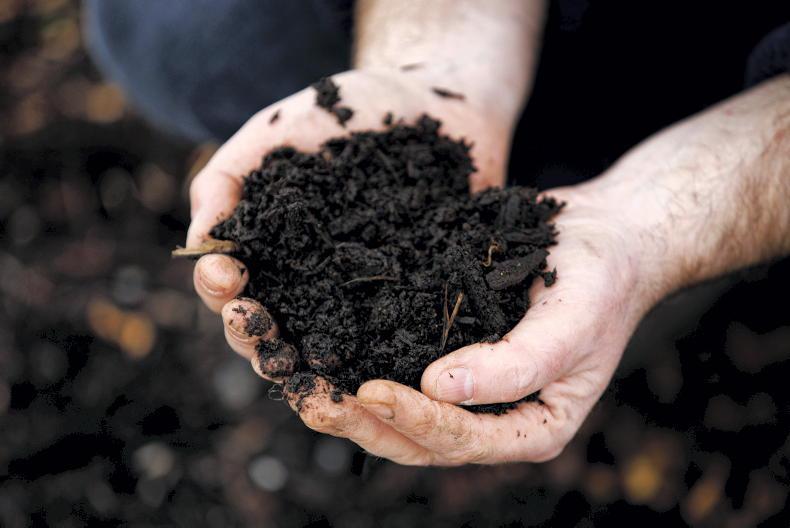
Kevin Wallace, New Leaf Urban Farmers, Ballyneety, Co Limerick. \ Donal O'Leary
While the work is physical and, sometimes, stressful; he finds it freeing and rewarding. In his own words, he started the farm “with €800 and some trays from Dealz”.
A method which makes sense
He started growing chemical-free vegetables; using low-till and then a no-till method to improve his soil. After a friend casually mentioned Korean natural farming to Kevin; he did some research. He says what he found made complete sense to him – both in terms of time management, the energy he puts into his farm and its environmental benefits. 
Kevin is largely focused on the health of his soil and has been working to improve it since he started his business.. \ Donal O'Leary
“I’m not a conventional farmer,” he says. “I don’t get any grants, everything is self-funded - which provides a lot of freedom but is also quite stressful; I can’t make a mistake. That’s what I like about Korean natural farming – you’re taking control of your own destiny and you’re able to microscopically look at what you’re doing. It also allows you to dip in and out, so even if you’re conventional you can try different aspects of it – either while you’re in conversion or just to try things out.”
Pest control
When asked about weed control, Kevin says his overall methodology makes weeds and pests less of an issue.

Kevin grows vegetables specifically for chefs and food service operators on his 1/2 acre allotment. \ Donal O'Leary
“I spend maybe one or two hours (per season) on weeding,” he explains. “Tarps are great for putting a pause button on annual weeds. Docks, dandelions, comfrey and nettles all get fermented and used in our IMOs because have strong growth enzymes. With Korean natural farming, you take the good properties [of the weeds] and use them for your own purposes.”
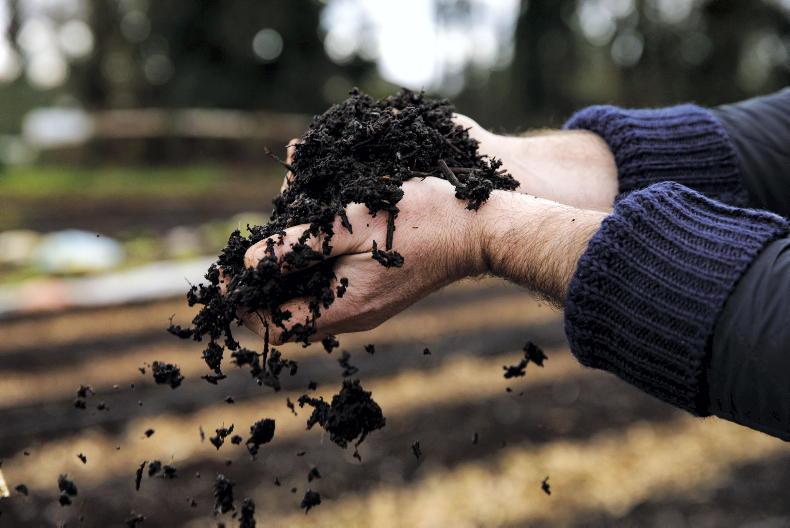
Time-saving techniqueKevin is running the business almost entirely on his own, so using a system which lessens inputs while, ultimately, creating less physical work is appealing.
“All these little jobs you have to do – if you can create time you’re on to a winner,” he explains. “With Korean natural farming, you’re using things that have evolved and adapted to their natural environment by exploiting their strength.”
Food for thought
Different plants need different things, so besides his IMO Kevin incorporates fish amino acids and an herbal medicine mix, among other things, to his plants at different stages of their growth.
He says it’s easy to get your soil sampled, but to really grow successfully this way, you need to be present and have some intuition. “Your plants need a wide range of micro and macro nutrients – you need to be there; understanding what they need and at what time.”
Bright future
With soil health already well-established, Kevin is looking to start using his IMO, which is nearly finished, on his gardens in the near future – a future which, despite the pandemic, he feels is very bright. He receives a higher-than-average price for his vegetables, but is cognisant to set prices with his clients in mind. He feels the quality, longevity and his ability to grow as per his chef clients needs sets his business apart.
“Growing food is so rewarding and you can do so much in a relatively small space,” he says.
“We’re constantly evolving and trying different things. Over time, investing back into the farm has gotten much easier.”
Summerhill Natural Dairy Farm
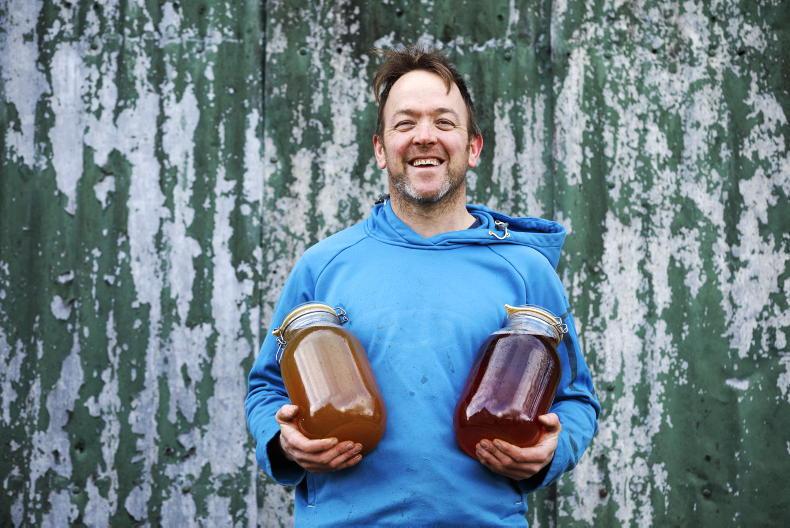
Tom uses a variety of naturally derived inputs instead of fertiliser on his 130ac. \ Donal O'Leary
Taking over his Ballyagran family farm in 2012, Tom was milking up to 65 cows and becoming increasingly disenchanted with commercial dairy.
He says he was just breaking even each year; while putting so much effort into making the farm work. With two young daughters to raise, he knew he needed to make a change.

Tom's natural inputs can mostly be found in glass jars, where they are stored in a cool, dark room on the farm. \ Donal O'Leary
Trying to keep up
“It’s funny, I just had enough,” he says. “I was trying to keep up by investing as my dad had been less intensive. I had grown by 15 cows to around 65 cows and was planning to go to 100.
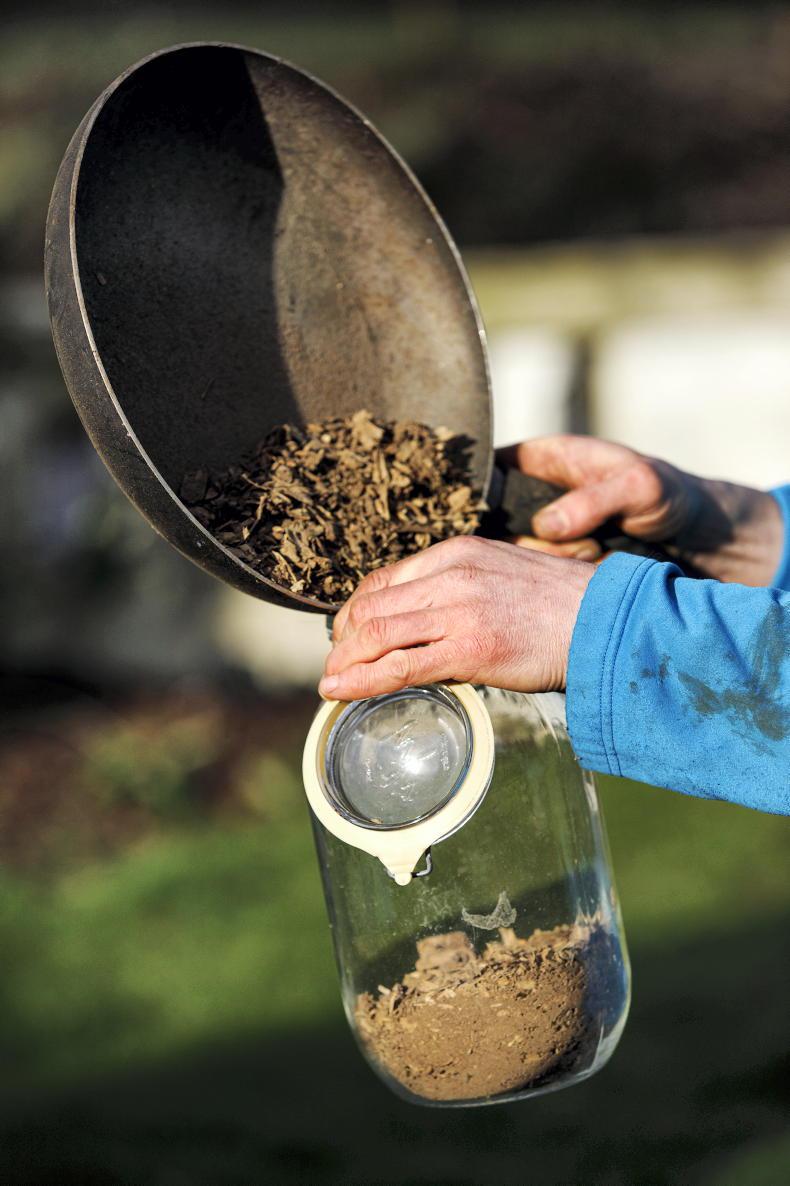
Tom Stack shows us his IMO mixture, a living soil made of indigenous microorganisms. \ Donal O'Leary
“Back then, my costs were going up while my income was staying the same. I just thought there had to be another way.”
Alternative methods
After attending a BioFarm conference in 2018, Tom had a light-bulb moment: he realised the first place to start was with his soil.
He learned there were two things he could do to improve soil health: start using sea water and incorporate Korean natural farming methods.
“I met some speakers [at the conference] and, after, went down a rabbit hole. I went home and did about five months of nights watching YouTube videos [on Korean natural farming].”
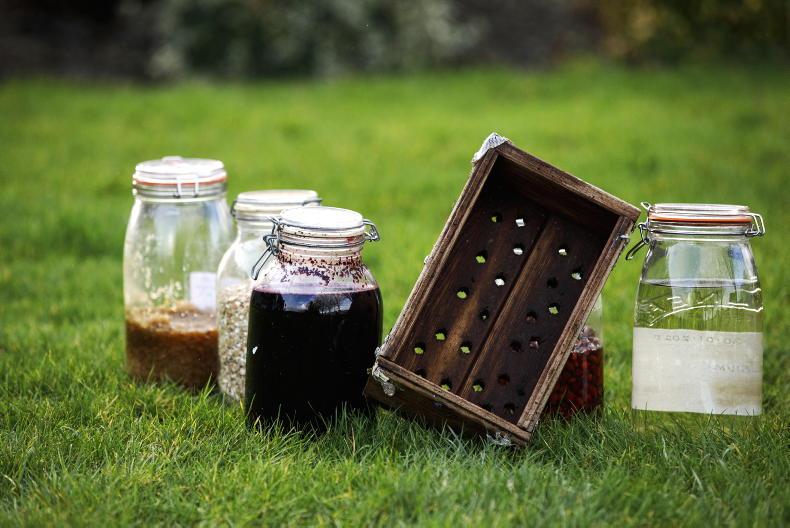
Some of Tom Stack's farming inputs, including the wooden box he uses to capture wild microorganisms. \ Donal O'Leary
From what he learned online, Tom was able to start making some natural inputs for his land – these included fermented plant juice (FPJ), lactic acid bacteria (LAB) and he started incorporating sea water, as advised. He could see these inputs were working.
Taking the plunge
“I needed to do a course in Korean natural farming; I needed to learn more,” he says. “Money was tight at the time, so I sold what I didn’t need and went to take a week-long course in America under Chris Trump (a teacher from Hawaii).
“Now, I’m not buying fertiliser or feed; it’s just grass,” he continues. “I’m organic and will be certified next month. Things have taken off since training under Chris Trump.”
When asked if he had a plan B before getting involved in Korean natural farming, Tom flashes a wide grin.
“I had no backup plan. What would you want that for?”
Making his farm work
He continues to farm around 130ac and currently milks 55 cows. He says this is a continuing process, but his situation (both financial and environmental) are improving every year. Where before he would spend over €30,000 per year on feed and fertiliser, he now spends around €1200 on natural inputs. After nearly three years of investing in the method, he says “this is the year I start to see pay back”. He uses a sprayer to saturate his fields with IMO “tea” after each grazing and, when preparing fields for silage, he’ll spray them during the growing period.
Not always an easy path
He recently signed to Glenisk and will receive a premium price for his milk; which he says is the best quality he has ever produced (Glenisk have confirmed they are currently paying up to 60c/l for certified organic milk). He admits, though, that his transition to organic farming hasn’t always been easy.
“There have definitely been hard times; a lot of cows couldn’t survive in my new system as I was no longer supplementing with grain or using antibiotics – that’s tough to see,” he says. “These are the first lot of heifers to become fully grass fed and they are bulletproof; they’ve been here through the whole process.”
Future for Korean natural farming
Tom plans to start a website in the near future and do farm walks for those interested in Korean natural farming in Ireland. He also hopes to bring Chris Trump, under whom he learned, over to Ireland for a visit when it’s safe to do so.
“If you work with nature, it will pay you back ten-fold,” he smiles. “Now I know why I’m farming and why I’m doing this – we’re not thinking in cycles; but in generations.”
Common Korean natural farming inputs
Indigenous micro-organisms (IMO)
Kevin describes a well-made IMO as “rocket fuel”. Made in five steps over a lengthy period of time, the end result is a living soil which can then be incorporated into fields and gardens, either by spraying or feeding directly under the grass level.
Lactic acid bacteria (LAB)
This can be made from fermenting raw milk and the liquid made from soaking rice. It aids in digestion (Tom regularly adds a few drops into his cows’ water). A beneficial probiotic, LAB is entirely safe for human consumption but in Korean natural farming, it helps with fermentation.
Fermented plant juice (FPJ)
If you have a field full of pesky (non-toxic) weeds, you can pick them when they are beginning to bud and ferment them into your plant juice. This is done by massaging them with brown sugar until their properties are released. This juice will help balance your soil biology.
Fish amino acids (FAA)
If you’ve ever added a few drops of fish sauce to a stir fry, this is basically the same thing. Kevin makes his FAA with local mackerel; allowing it to slowly ferment until ready to use. The resulting concoction does not have a fishy or rotten smell and is an excellent food source for plants and soil.
Vinegar (brown rice or apple cider)
In traditional Korean natural farming, brown rice is the vinegar of choice. Tom has been using Highbank Orchards organic apple cider vinegar for his personal method. The vinegar has a natural cleansing effect and kills bad bacteria.
Oriental herbal nutrient (OHN)
This is a combination of five ingredients: angelica root, garlic, ginger, liquorice and cinnamon. They are extracted with alcohol and then fermented with brown sugar. Then, they are combined and added to IMOs or directly to plants as needed. This mixture encourages beneficial bacteria.
It all sounds a bit mad. A farming method which relies on things like raw brown cane sugar and rice instead of fertiliser? At the very least, if this method works, it’s probably better suited to small vegetable gardens. This is just a bit of what’s running through my mind as I drive to Co Limerick to meet with Kevin Wallace, the owner and grower at New Leaf Urban Farmers, and and Thomas Stack, an organic dairy farmer, farming 130ac with a herd of 55 exclusively grass-fed Fresians – both of whom practise Korean natural farming.
A different approach
I’m having a hard time wrapping my head around the practicalities of this biological farming method. It was developed in South Korea in the 1960s by a man named Cho Han Kyu. Its aim is to maximise farm productivity while minimising chemical inputs and as much physical effort as possible.
A quick Google search of Korean natural farming provides an overwhelming amount of acronyms – IMO, LAB, FPJ (see page 5 for more). Acronyms aside, what the method really does is increase the health of your soil by using what is naturally available in your area; mostly through fermentation and promotion of wild microorganisms. As a result, fertiliser becomes unnecessary and the method can work for any type of farm; supposedly anywhere in the world, though one concern is that it may not be able to feed high output production.
Natural inputs
For Tom and Kevin, inputs include sea water, fermented plant juices, calcium phosphates and fish amino acids. Tom uses a large supply of Highbank Orchards apple cider vinegar at his farm, while Kevin uses brown rice vinegar. Rice is used to help capture the microorganisms and the ferments are made using alcohol or brown sugar. As yet, more local alternatives to these crucial ingredients have not been found.
Indigenous microorganisms (IMO)
The two men have been working together to create the most crucial aspect of the farming method – their IMO mixture, which is then used on their fields and vegetable beds to increase the microbiome of the soil.
An IMO is completed in five different stages. Like making a sourdough starter, you provide the captured microorganisms with moisture, food and warmth to enable it to multiply. Once created, the IMO mixture can be used as is, or can be made into liquid IMO – a sort of “tea” by being diffused with various other natural inputs, which is then sprayed or fed into a field or garden.
New Leaf Urban Farmers

Kevin uses only hand tools for growing his vegetables. \ Donal O'Leary
“Korean natural farming is all about balance and harmony – but don’t think for a second it’s ‘hippy-dippy’,” Kevin says as we walk the length of his 1.5ac allotment in Bawnmore. “This method is highly scientific – in fact, it’s the most scientific bio-farming method I’ve come across. I’ve spent about 400 hours online learning about the method; [the information is] out there and available to anyone.”
Kevin has been growing vegetables full time – mainly selling directly to chefs and other food service operations – since 2016.

Kevin Wallace, New Leaf Urban Farmers, Ballyneety, Co Limerick. \ Donal O'Leary
While the work is physical and, sometimes, stressful; he finds it freeing and rewarding. In his own words, he started the farm “with €800 and some trays from Dealz”.
A method which makes sense
He started growing chemical-free vegetables; using low-till and then a no-till method to improve his soil. After a friend casually mentioned Korean natural farming to Kevin; he did some research. He says what he found made complete sense to him – both in terms of time management, the energy he puts into his farm and its environmental benefits. 
Kevin is largely focused on the health of his soil and has been working to improve it since he started his business.. \ Donal O'Leary
“I’m not a conventional farmer,” he says. “I don’t get any grants, everything is self-funded - which provides a lot of freedom but is also quite stressful; I can’t make a mistake. That’s what I like about Korean natural farming – you’re taking control of your own destiny and you’re able to microscopically look at what you’re doing. It also allows you to dip in and out, so even if you’re conventional you can try different aspects of it – either while you’re in conversion or just to try things out.”
Pest control
When asked about weed control, Kevin says his overall methodology makes weeds and pests less of an issue.

Kevin grows vegetables specifically for chefs and food service operators on his 1/2 acre allotment. \ Donal O'Leary
“I spend maybe one or two hours (per season) on weeding,” he explains. “Tarps are great for putting a pause button on annual weeds. Docks, dandelions, comfrey and nettles all get fermented and used in our IMOs because have strong growth enzymes. With Korean natural farming, you take the good properties [of the weeds] and use them for your own purposes.”

Time-saving techniqueKevin is running the business almost entirely on his own, so using a system which lessens inputs while, ultimately, creating less physical work is appealing.
“All these little jobs you have to do – if you can create time you’re on to a winner,” he explains. “With Korean natural farming, you’re using things that have evolved and adapted to their natural environment by exploiting their strength.”
Food for thought
Different plants need different things, so besides his IMO Kevin incorporates fish amino acids and an herbal medicine mix, among other things, to his plants at different stages of their growth.
He says it’s easy to get your soil sampled, but to really grow successfully this way, you need to be present and have some intuition. “Your plants need a wide range of micro and macro nutrients – you need to be there; understanding what they need and at what time.”
Bright future
With soil health already well-established, Kevin is looking to start using his IMO, which is nearly finished, on his gardens in the near future – a future which, despite the pandemic, he feels is very bright. He receives a higher-than-average price for his vegetables, but is cognisant to set prices with his clients in mind. He feels the quality, longevity and his ability to grow as per his chef clients needs sets his business apart.
“Growing food is so rewarding and you can do so much in a relatively small space,” he says.
“We’re constantly evolving and trying different things. Over time, investing back into the farm has gotten much easier.”
Summerhill Natural Dairy Farm

Tom uses a variety of naturally derived inputs instead of fertiliser on his 130ac. \ Donal O'Leary
Taking over his Ballyagran family farm in 2012, Tom was milking up to 65 cows and becoming increasingly disenchanted with commercial dairy.
He says he was just breaking even each year; while putting so much effort into making the farm work. With two young daughters to raise, he knew he needed to make a change.

Tom's natural inputs can mostly be found in glass jars, where they are stored in a cool, dark room on the farm. \ Donal O'Leary
Trying to keep up
“It’s funny, I just had enough,” he says. “I was trying to keep up by investing as my dad had been less intensive. I had grown by 15 cows to around 65 cows and was planning to go to 100.

Tom Stack shows us his IMO mixture, a living soil made of indigenous microorganisms. \ Donal O'Leary
“Back then, my costs were going up while my income was staying the same. I just thought there had to be another way.”
Alternative methods
After attending a BioFarm conference in 2018, Tom had a light-bulb moment: he realised the first place to start was with his soil.
He learned there were two things he could do to improve soil health: start using sea water and incorporate Korean natural farming methods.
“I met some speakers [at the conference] and, after, went down a rabbit hole. I went home and did about five months of nights watching YouTube videos [on Korean natural farming].”

Some of Tom Stack's farming inputs, including the wooden box he uses to capture wild microorganisms. \ Donal O'Leary
From what he learned online, Tom was able to start making some natural inputs for his land – these included fermented plant juice (FPJ), lactic acid bacteria (LAB) and he started incorporating sea water, as advised. He could see these inputs were working.
Taking the plunge
“I needed to do a course in Korean natural farming; I needed to learn more,” he says. “Money was tight at the time, so I sold what I didn’t need and went to take a week-long course in America under Chris Trump (a teacher from Hawaii).
“Now, I’m not buying fertiliser or feed; it’s just grass,” he continues. “I’m organic and will be certified next month. Things have taken off since training under Chris Trump.”
When asked if he had a plan B before getting involved in Korean natural farming, Tom flashes a wide grin.
“I had no backup plan. What would you want that for?”
Making his farm work
He continues to farm around 130ac and currently milks 55 cows. He says this is a continuing process, but his situation (both financial and environmental) are improving every year. Where before he would spend over €30,000 per year on feed and fertiliser, he now spends around €1200 on natural inputs. After nearly three years of investing in the method, he says “this is the year I start to see pay back”. He uses a sprayer to saturate his fields with IMO “tea” after each grazing and, when preparing fields for silage, he’ll spray them during the growing period.
Not always an easy path
He recently signed to Glenisk and will receive a premium price for his milk; which he says is the best quality he has ever produced (Glenisk have confirmed they are currently paying up to 60c/l for certified organic milk). He admits, though, that his transition to organic farming hasn’t always been easy.
“There have definitely been hard times; a lot of cows couldn’t survive in my new system as I was no longer supplementing with grain or using antibiotics – that’s tough to see,” he says. “These are the first lot of heifers to become fully grass fed and they are bulletproof; they’ve been here through the whole process.”
Future for Korean natural farming
Tom plans to start a website in the near future and do farm walks for those interested in Korean natural farming in Ireland. He also hopes to bring Chris Trump, under whom he learned, over to Ireland for a visit when it’s safe to do so.
“If you work with nature, it will pay you back ten-fold,” he smiles. “Now I know why I’m farming and why I’m doing this – we’re not thinking in cycles; but in generations.”
Common Korean natural farming inputs
Indigenous micro-organisms (IMO)
Kevin describes a well-made IMO as “rocket fuel”. Made in five steps over a lengthy period of time, the end result is a living soil which can then be incorporated into fields and gardens, either by spraying or feeding directly under the grass level.
Lactic acid bacteria (LAB)
This can be made from fermenting raw milk and the liquid made from soaking rice. It aids in digestion (Tom regularly adds a few drops into his cows’ water). A beneficial probiotic, LAB is entirely safe for human consumption but in Korean natural farming, it helps with fermentation.
Fermented plant juice (FPJ)
If you have a field full of pesky (non-toxic) weeds, you can pick them when they are beginning to bud and ferment them into your plant juice. This is done by massaging them with brown sugar until their properties are released. This juice will help balance your soil biology.
Fish amino acids (FAA)
If you’ve ever added a few drops of fish sauce to a stir fry, this is basically the same thing. Kevin makes his FAA with local mackerel; allowing it to slowly ferment until ready to use. The resulting concoction does not have a fishy or rotten smell and is an excellent food source for plants and soil.
Vinegar (brown rice or apple cider)
In traditional Korean natural farming, brown rice is the vinegar of choice. Tom has been using Highbank Orchards organic apple cider vinegar for his personal method. The vinegar has a natural cleansing effect and kills bad bacteria.
Oriental herbal nutrient (OHN)
This is a combination of five ingredients: angelica root, garlic, ginger, liquorice and cinnamon. They are extracted with alcohol and then fermented with brown sugar. Then, they are combined and added to IMOs or directly to plants as needed. This mixture encourages beneficial bacteria.














SHARING OPTIONS